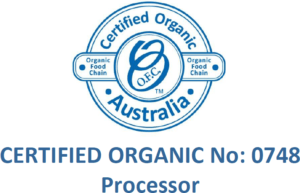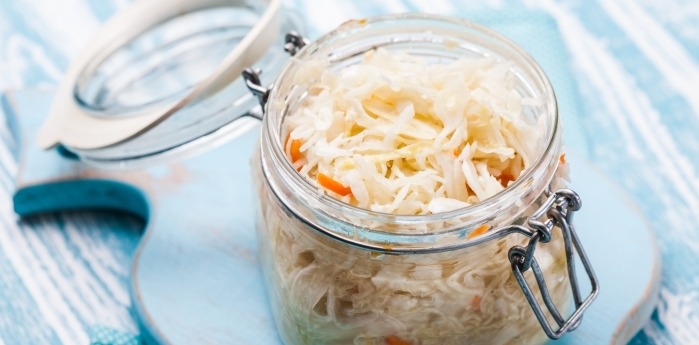Fermentation – Then and Now
Fermentation has been used to preserve food for thousands of years. The diets of every traditional society have included some kind of lacto-fermented food. Europeans eat lacto-fermented dairy, sauerkraut, grape leaves, herbs and root vegetables. The Alaskan Inuit ferment fish and sea mammals. The Orient is known for pickled vegetables, sauces and kimchi. Farming societies in central Africa eat porridges made from soured grains, and pickles and relishes are a part of the American food tradition.
Above: Kimchi ferments in Korea.
You may be wondering why then, in our modern world, would we want to continue fermenting certain foods? After all, we have fresh produce available daily at the local supermarket and we have fridges and freezers to store it in. Even then, if we wanted to use preserved foods we could just buy some canned vegetables, right?
There are advantages of lacto-fermentation over other methods of food preservation, and there are health benefits of eating fermented vegetables, too.
– Lacto-fermentation can enhance the nutritive value of food as many enzymes and probiotics are created.
– Fermented foods are filled with “friendly” or “good” bacteria which are healthy for the gut.
– You may absorb more nutrients from the food as the good bacteria “pre-digests” certain food components, making it easier for the gut to assimilate.
– People who are lactose intolerant usually tolerate yogurt or kefir, because the lactose sugar in these products has been partly broken down by the bacteria.
– Making cabbage into sauerkraut or kimchi increases glucosinolate compounds believed to fight cancer.
– Introducing friendly bacteria into your digestive system may help keep illness away as the gut is the largest component of your immune system. Evidence suggests that gut health could affect inflammation, allergies and autoimmune disorders in the body as a whole.
– Most store-bought products use vinegar which offers a predictable result, but doesn’t produce lactic acid which is the most beneficial part of the lacto-fermentation process.
– Making your own ferments is much more cost-effective than buying them at the store.
– Lacto-fermentation is a simple process- much simpler than the canning process. Less energy is used in terms of gas and electricity, so it’s more sustainable.
What is Lacto-Fermentation?
Most people think about beer or wine when they hear the term fermentation. While certain yeasts are used to convert the sugars in grape juice or grains into alcohol, it is bacteria that are responsible for lacto-fermentation. The “lacto” portion of the term refers to a specific species of bacteria, namely Lactobacillus. Various strains of these bacteria are present on the surface of all plants, especially those growing close to the ground, and are also common to the gastrointestinal tracts of humans and other animal species.
Lactobacillus bacteria have the ability to convert sugars into lactic acid. The Lactobacillus strain is so named because it was first studied in milk ferments. These bacteria readily use lactose or other sugars and convert them quickly and easily to lactic acid. However, lacto-fermentation does not necessarily need to involve dairy products.
Lactic acid is a natural preservative that inhibits the growth of harmful bacteria. Beyond preservation advantages, lacto-fermentation also increases or preserves the vitamin and enzyme levels, as well as digestibility, of the fermented food.
Getting Started – A Simple Sauerkraut Recipe
Fermentation is a relatively easy process, but it can be intimidating for first-timers. Basic sauerkraut may be one of the most popular ferments, and it is such an easy recipe that it works great for beginners. Follow this simple sauerkraut recipe to get used to the process and you’ll be progressing beautifully with your ferments in no time!
INGREDIENTS:
• 1 medium head of cabbage
• 1-3 tablespoons sea salt
Instructions:
1. Chop or shred cabbage. Sprinkle with salt.
2. Knead the cabbage with clean hands, or pound with a potato masher or Cabbage Crusher about 10 minutes, until there is enough liquid to cover.
3. Stuff the cabbage into a 1 litre mason jar, pressing the cabbage underneath the liquid. If necessary, add a bit of water to completely cover cabbage.
4. Tightly close the lid.
5. Culture at room temperature (15-20°C is preferred) until desired flavour and texture are achieved. Burp daily to release excess pressure.
6. Once the sauerkraut is finished, move to cold storage. The sauerkraut’s flavour will continue to develop as it ages.
Makes approximately 1 litre.
OPTIONAL INGREDIENTS:
Prior to culturing, mix 1 part shredded carrots, apple, or other vegetables to 5 parts cabbage, for a more complex flavour. Add caraway seeds, if desired.




